Research
We aim to better our understanding of the neuronal basis of behavior by using the latest methods and systems in neuroscience.
Techniques
Our team utilizes a number of methods to collect, analyze, and interpret data. Methods are continually evolving in our work and throughout the neuroscience field. Below are a few of the techniques which we utilize frequently.
Freely moving recordings of in vivo neuronal activity
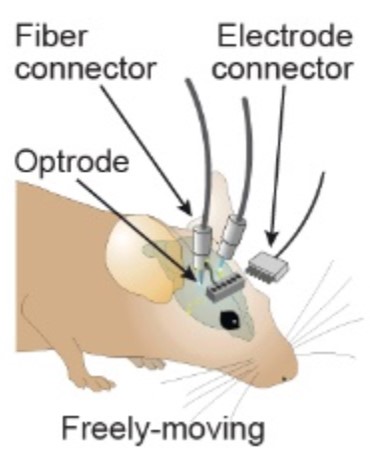 These recordings enable our researchers to record data in real time such as in resting states, everyday behavior, and experimental conditions. Experimental mice are injected with a virus into a localized brain region. These injections do not make the mouse ill but enable fluorescent expression at the injection site allowing us to see how targeted proteins express when paired with behavioral markers in vivo.
These recordings enable our researchers to record data in real time such as in resting states, everyday behavior, and experimental conditions. Experimental mice are injected with a virus into a localized brain region. These injections do not make the mouse ill but enable fluorescent expression at the injection site allowing us to see how targeted proteins express when paired with behavioral markers in vivo.
Single-Unit Recordings
This technique allows our researchers to assess action potentials and provide precise measurement of electrophysiological activity within one neuron. This data allows information to be gathered on the pattern of electrical impulses over time and how various manipulations affect this pattern.
Deep-brain imaging
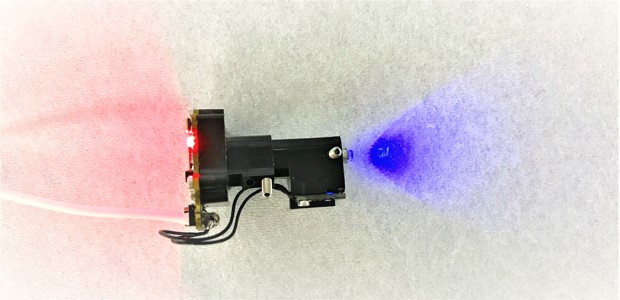 This technique is performed by implanting a gradient-index (GRIN) lens, a glass fiber-optic that allows researchers to view changes in calcium levels with a miniaturized fluorescence microscope (shown in photo). GRIN lenses are implanted deep into specified brain structures and allow researchers to view calcium changes that occur within a brain structure during examined behaviors.
This technique is performed by implanting a gradient-index (GRIN) lens, a glass fiber-optic that allows researchers to view changes in calcium levels with a miniaturized fluorescence microscope (shown in photo). GRIN lenses are implanted deep into specified brain structures and allow researchers to view calcium changes that occur within a brain structure during examined behaviors.
Optogenetics / Chemogenetics
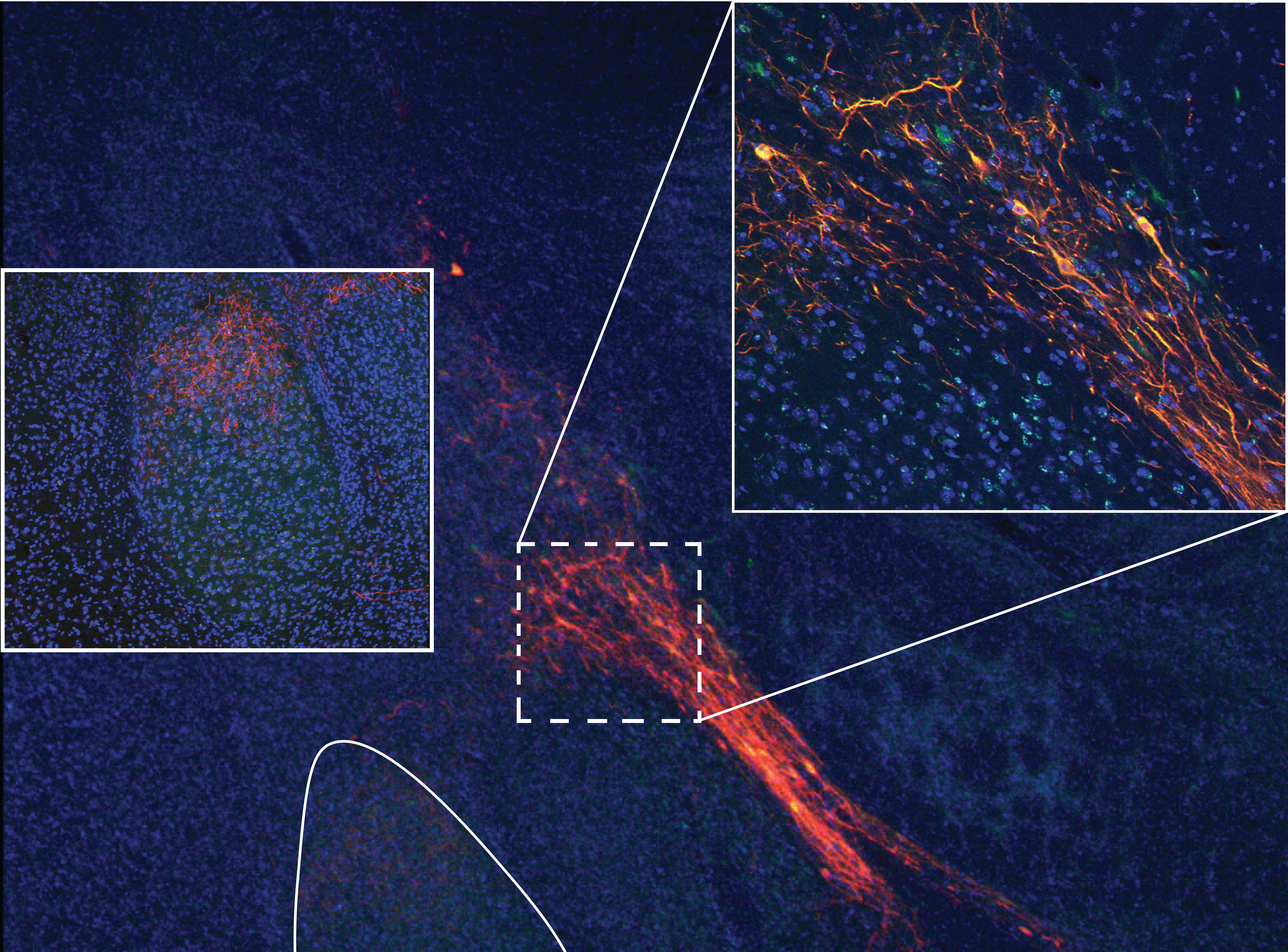
Optogenetics utilize both genetic makeup and optical observation methods to understand changes in behavior. The mice chosen are genetically bred to express opsins given the correct conditions. To induce this expression our researchers inject targeted neurons with a viral vector. This vector stimulates or inhibits opsins that are then able to be viewed using light stimulation.
Chemogenetics utilize proteins called DREADDs that enact long-term stimulation to targeted neuronal pathways. This technique enables researchers to better understand connections between specified brain structures. For example, instead of separately studying the central amygdala and the hippocampus, chemogenetics allows researchers to study the function of a particular pathway between the two structures.
Cell-type / Pathway specific neuroanatomical tracing
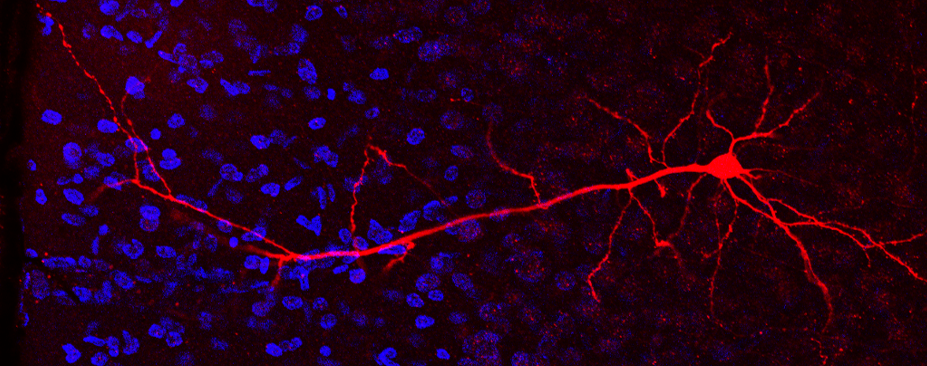 Non-toxic tracers are injected into targeted cells or pathways to determine how a particular signal traveled through the brain. This tracing is then analyzed using electrophysiology which fluoresces with staining.
Non-toxic tracers are injected into targeted cells or pathways to determine how a particular signal traveled through the brain. This tracing is then analyzed using electrophysiology which fluoresces with staining.
Assays of motivated behavior
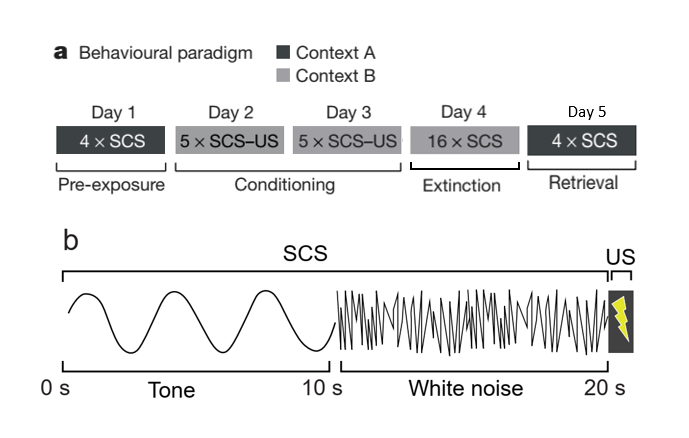 These assessments allow for our researchers to analyze various behavioral paradigms. Such assessments include the elevated plus maze, which is used to measure anxiety behaviors relative to exploring the enclosed and open arms; and Pavlovian conditioning paradigm, which is used to analyze context-dependent changes in defensive behavior in response to various stimuli.
These assessments allow for our researchers to analyze various behavioral paradigms. Such assessments include the elevated plus maze, which is used to measure anxiety behaviors relative to exploring the enclosed and open arms; and Pavlovian conditioning paradigm, which is used to analyze context-dependent changes in defensive behavior in response to various stimuli.
